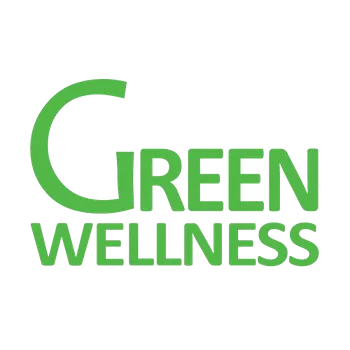What are Parabens?
Parabens are a group of chemicals widely used as artificial preservatives in beauty, toiletries, pharmaceuticals, food and beverages since 1920s for its antimicrobial properties to prevent growth of bacteria and mold.
Is Parabens natural?
Chemically, Wikipedia stated parabens as esters of para-hydroxybenzoic acid, from which the name is derived.
According to the ChemicalSafetyFacts.org developed and maintained by the American Chemistry Council, parabens are derived from para-hydroxybenzoic acid (PHBA) that occurs naturally in many fruits and vegetables, such as cucumbers, cherries, carrots, blueberries and onions. PHBA also is naturally formed in the human body by the breakdown of some amino acids. Parabens used in cosmetics are identical to those found in nature, and the human body quickly changes them into natural PHBA and eliminates them. [1]
However, apart from the definition and argument, we have not seen any actual products that states the source of their paraben used. Instead, many manufacturers have opted for paraben-free products in recent years. Our question of whether commercially used paraben are derived from natural sources or synthetically produced thus remain opened until now.
Is Parabens really harmful?
As published by the Environmental Working Group (EWG), many studies have pinpointed parabens as:
- Hormone disruptors leading to reproductive development, fertility and birth outcomes
- Endocrine disruption in connection to breast cancer in particular
- Skin irritation
- Ecological harm to the ocean and ecosystem
EWG’s skindeep database also pointed out that over 3,000 products containing parabens scores a 7 or 8 out of 10 which indicates high hazard. [2]
U.S. Center for Disease Control (CDC) scientists also found Methylparaben and propylparaben in the urine of most of the people tested, indicating widespread exposure to these parabens in the U.S. population. I don’t know about you but to us, anything that’s alien to the body shouldn’t even enter in the first place even if it can be excreted through urine and bile.
However, U.S. Food & Drug Administration (FDA) scientists continue to review published studies on the safety of parabens but claimed in year 2020 that they did not have information showing that parabens used in cosmetics have an effect on human health. But it may be worthwhile to note that according to the Federal Food, Drug, and Cosmetic Act (FD&C Act), cosmetic products and ingredients, other than color additives, do not need FDA approval before they go on the market. [3]
Where are Parabens found?
Cosmetic and makeup, hair care products, moisturizers, sunscreens, shaving products.
Is Parabens banned anywhere in the world?
According to EWG, parabens are regulated in Japan, the EU and the Southeast Asian nations, where officials have set maximum concentration standards. In the EU and Southeast Asian nations, some parabens that EWG found in U.S. products (isobutyl and isopropyl parabens) are not permitted in any cosmetic product. [4]
What to look for on the product label?
methylparaben, ethylparaben, propylparaben, butylparaben
Additional info on parabens that's been banned by EU since 2014: Isopropylparaben, Isobutylparaben, Phenylparaben, Benzylparaben and Pentylparaben. [5]
What should I do?
Carry out your own research if possible. Be aware, alert and check on the ingredient list or product label whenever possible.
Our thoughts in conclusion
Truthfully, paraben safety has been a controversial topic for many years! While several are concerned on the safety of paraben presence in the toiletries, cosmetics and food, some also argue that parabens is not as harmful as some think but can protect one from virus, mold and fungi contamination.
This believe also differ among countries, leading to the different treatment and policy adopted by each country to ban or approve products containing parabens. But it also depends on the type of parabens used.
In our humble opinion, source to produce paraben as an ingredient is questionable. Bioaccumulation and cocktail effect of mixed chemicals could be a concern even if paraben is perceived safe on its own. Thus unnecessary exposure is always desired and there's really no point to dwell on arguments.
As a consumer, why take the risk? Why not be safe than sorry? After all, when standing at the shopping aisle or online store, it is our own responsibility and decision making in regards to what and who can provide the best and safest options for yourself and your family, especially for baby and young children.
This article was derived from continuous research base learning and best knowledge on development of chemical pollutants by Green Wellness Malaysia's Founder and Managing Director, Datin Dorph Peng.
Your thoughts, feedback and comments are most welcome. Please feel free to emailblog@greenwellness.my
References:
[1] https://www.chemicalsafetyfacts.org/parabens/
[2] https://www.ewg.org/what-are-parabens
[3] https://www.fda.gov/cosmetics/cosmetic-ingredients/parabens-cosmetics#products
[4] https://www.ewg.org/news-insights/news/cosmetics-safety-us-trails-more-40-nations
[5] https://www.ul.com/news/eu-bans-five-parabens-cosmetics
DISCLAIMER: Content from this article is not a substitute for professional medical and healthcare advice, diagnosis, treatment, dietary, or safety advice, and may not be used for such purposes. Always seek the advice of your doctor, physician or other qualified expert with any questions you may have regarding a medical question, condition, or safety concern. Reliance on information presented on this article is at your own risk.




